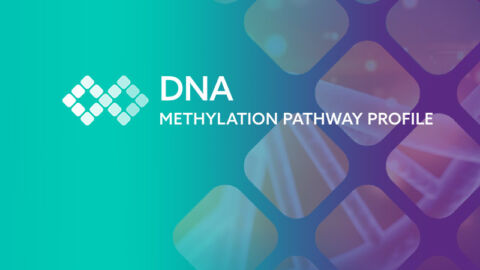On the Organic Acids Test, the indicators of detoxification section is a beneficial section to understand. In an earlier blog, the mysteries of pyroglutamic acid were demystified. This post aims to explain the importance of marker 59, 2 hydroxybutyric acid (2HB). This marker is marked with two asterisks to denote its connection to methylation and toxic burden. These two facts make this marker one to keep an eye on. Be sure on every OAT you are checking this marker to be sure it isn’t elevated.
When elevated, 2HB tells us a major fact. We learn that homocysteine, an amino acid used to make other needed compounds in our body, is being broken down at a high level (4). The 2 molecules made from homocysteine are methionine and cysteine (3). Methionine is made via the conversion of homocysteine via methylation dependent reactions. When methylation is impaired homocysteine is unable to be converted to methionine. This leads to a buildup of homocysteine in the bloodstream. On serum testing, elevations of this amino acid are concerning due to the health implications. High homocysteine is inflammatory and increases the risk of developing cardiovascular disease (3), cognitive decline and dementia (11), high blood pressure, stroke, rectal cancer diagnosis and progression (5), and bone disease (1).
On the other hand, homocysteine is broken down to create cysteine. This pathway is called the CBS pathway. It gets its name as the enzyme cystathionine beta-synthase is produced. This enzyme joins serine and homocysteine into cystathionine and then it is cleaved to produce alpha ketobutyrate (14). In the production of alpha ketobutyrate, cysteine is formed and 2HB is produced. When up regulated, the CBS pathway causes an increased urinary excretion of 2HB, and it is measured on the OAT (6). This path is upregulated in times of decreased methylation capability, a need for increased glutathione production, and for ATP production. In cases of methylation complications, rising homocysteine causes inflammation which can be detrimental to one’s health. The body then upregulates CBS. In times of toxic burden, the need for increased glutathione circulation for detoxification upregulates CBS to increase cysteine production. This is one of the main ingredients for glutathione production and when produced it is then fed into the glutathione production cycle. In times of ATP production, the alpha ketobutyrate produced is shunted to produce an increased amount of propionyl-CoA (6). This is a precursor to succinyl-CoA, which is a major constituent in the TCA or Krebs cycle. Cysteine is also a precursor to taurine (7). This amino acid is needed for bile acid production for fat absorption and cholesterol regulation (7, 8). Homocysteine is a major biological hub used for all of these processes. The 2HB marker on the OAT gives us insight into when it’s being utilized at high rates.
In other cases, 2HB can be elevated for other reasons. This compound has been researched recently as it relates to blood sugar regulation and insulin production. Its elevation has been linked to the impairment of beta cell function along with increased free fatty acids in circulation (12). These two factors are hallmarks of insulin resistance. During insulin resistance, from increased glucose, more glucose flows through glycolysis to make pyruvate and acetyl CoA which causes an increased production of NADH. This increased supply leads to increased pressure on the electron transport chain (ETC) and thus increased oxidative stress since NAD+ is not supplied (12). When an excess of stress in the mitochondria from increased reactive oxygen species (ROS) becomes too much, glutathione (GSH) comes in to mitigate the stress. This constant stress eventually depletes GSH as it cannot regenerate fast enough to meet the demand (12). The body then upregulates the CBS pathway and breaks down homocysteine. 2HB then builds up and spills into the urine. To combat the insulin resistance, lipid oxidation is upregulated which causes and there is an increase of FFAs to be oxidized by the TCA. This heavily increases even more NADH and oxidative stress. This excess leads to a buildup of the amino acids threonine and methionine, which alpha keto butyrate comes from, and it is then metabolized into 2HB (12, 10). Due to these facts, 2HB is being researched as a new biomarker for type 2 diabetes. It is still not widely accepted as a biomarker as it can be elevated in lactic acidosis and diabetic ketoacidosis. Regarding lactic acidosis, there is an upregulation of lactate dehydrogenase activity (LDH) (13). This enzyme breaks down 2 oxobutyrate, a normal intermediate in the metabolism of amino acids where alpha ketobutyrate is also formed and then converted to 2HB (9). LDH is increased in many disease states when cells are damaged or destroyed (15). An increase in the NADH/NAD+ ratio leads to oxidative damage that can increase LDH activity leading to increased lactic acid and 2HB (12).
When you see this marker elevated, what do you do next? In most cases, the next best step is to check a serum homocysteine level. When elevated disruptions in methylation ability or genetic SNPs in the CBS pathway should be explored (2). Consider DNA Methylation testing with GPL. If the value is lowered, there is a need to explore the possibility of toxic exposure since the CBS pathway is upregulated. In cases of elevated 2HB and increased ketones or lactic acid (markers 43/44 and 22 on the OAT), also consider further testing regarding blood sugar regulation. At the very least, with this marker elevated, we know there is oxidative damage. Antioxidant support can be added to mitigate the stress as we explore all the possibilities of why it is elevated.
This marker is valuable in opening many doors of exploration of underlying disease states. 2HB should not be overlooked when analyzing the OAT. When elevated, be sure to explore the possibilities mentioned above. Hopefully future research will open more doors to the usefulness of this marker in the management and treatment of various disease states.
References
1.1. Behera, J., Bala, J., Nuru, M., Tyagi, S. C., & Tyagi, N. (2017, October). Homocysteine as a pathological biomarker for Bone Disease. Journal of cellular physiology. Retrieved January 21, 2022, from https://www.ncbi.nlm.nih.gov/pmc/articles/PMC5576446/#:~:text=Increased%20homocysteine%20levels%20also%20induces,osteoporosis%20by%20reducing%20bone%20formation.Finkelstein, J. D. (1998). The metabolism of homocysteine: Pathways and regulation. European Journal of Pediatrics, 157(S2). https://doi.org/10.1007/pl00014300High homocysteine. Linus Pauling Institute. (2018, January 17). Retrieved January 21, 2022, from https://lpi.oregonstate.edu/mic/health-disease/high-homocysteineHomocysteine: Levels, tests, high homocysteine levels. Cleveland Clinic. (n.d.). Retrieved January 21, 2022, from https://my.clevelandclinic.org/health/articles/21527-homocysteineLiu, Z., Cui, C., Wang, X., Fernandez-Escobar, A., Wu, Q., Xu, K., Mao, J., Jin, M., & Wang, K. (2018, March 27). Plasma levels of homocysteine and the occurrence and progression of rectal cancer. Medical science monitor : international medical journal of experimental and clinical research. Retrieved January 21, 2022, from https://www.ncbi.nlm.nih.gov/pmc/articles/PMC5883868/Miyazaki, T., Honda, A., Ikegami, T., Iwamoto, J., Monma, T., Hirayama, T., Saito, Y., Yamashita, K., & Matsuzaki, Y. (2015). Simultaneous quantification of salivary 3-hydroxybutyrate, 3-hydroxyisobutyrate, 3-hydroxy-3-methylbutyrate, and 2-hydroxybutyrate as possible markers of amino acid and fatty acid catabolic pathways by LC–ESI–MS/MS. SpringerPlus, 4(1). https://doi.org/10.1186/s40064-015-1304-0Moss, M., & Waring, R. H. (2009, July). The Plasma Cysteine/Sulphate Ratio: A Possible Clinical Biomarker. Research Gate. Retrieved January 24, 2022, from https://www.researchgate.net/publication/232041262_The_Plasma_CysteineSulphate_Ratio_A_Possible_Clinical_BiomarkerMurakami S;Fujita M;Nakamura M;Sakono M;Nishizono S;Sato M;Imaizumi K;Mori M;Fukuda N; (n.d.). Taurine ameliorates cholesterol metabolism by stimulating bile acid production in high-cholesterol-fed rats. Clinical and experimental pharmacology & physiology. Retrieved January 21, 2022, from https://pubmed.ncbi.nlm.nih.gov/26710098/Pettersen, J. E., Landaas, S., & Eldjarn, L. (2003, January 22). The occurrence of 2-hydroxybutyric acid in urine from patients with lactic acidosis. Clinica Chimica Acta. Retrieved January 21, 2022, from https://www.sciencedirect.com/science/article/abs/pii/0009898173903677Showing metabocard for 2-hydroxybutyric acid (HMDB0000008). Human Metabolome Database: Showing metabocard for 2-Hydroxybutyric acid (HMDB0000008). (n.d.). Retrieved January 21, 2022, from https://hmdb.ca/metabolites/HMDB0000008Smith, A. D., Refsum, H., Bottiglieri, T., Fenech, M., Hooshmand, B., McCaddon, A., Miller, J. W., Rosenberg, I. H., & Obeid, R. (2018). Homocysteine and dementia: An international consensus statement. Journal of Alzheimer's disease : JAD. Retrieved January 21, 2022, from https://www.ncbi.nlm.nih.gov/pmc/articles/PMC5836397/Sousa, A. P., Cunha, D. M., Franco, C., Teixeira, C., Gojon, F., Baylina, P., & Fernandes, R. (2021, December 3). Which role plays 2-hydroxybutyric acid on insulin resistance? MDPI. Retrieved January 21, 2022, from https://www.mdpi.com/2218-1989/11/12/835/htmStojanovic, V., & Ihle, S. (2011, April). Role of beta-hydroxybutyric acid in diabetic ketoacidosis: A Review. The Canadian veterinary journal = La revue veterinaire canadienne. Retrieved January 21, 2022, from https://www.ncbi.nlm.nih.gov/pmc/articles/PMC3058661/U.S. National Library of Medicine. (2020, August 18). CBS gene: Medlineplus Genetics. MedlinePlus. Retrieved January 21, 2022, from https://medlineplus.gov/genetics/gene/cbs/#conditionsWebMD. (n.d.). Lactic acid dehydrogenase (LDH) test: Purpose, procedure, risks, results. WebMD. Retrieved January 21, 2022, from https://www.webmd.com/a-to-z-guides/lactic-acid-dehydrogenase-test




